Explore the intricacies of fiber optic solutions, from selecting trunk cables to understanding optical switches. Dive deep into the future of high-speed digital connectivity.
Mastering Fiber Optic Solutions: From Buying Fiber Trunk Cable To Optical Switch And Beyond
In the contemporary era of boundless digital communication, the veins that power our connections are undoubtedly fiber optic solutions. Offering unprecedented speed and reliability, these optical fibers have become the backbone of our global communication infrastructure.
This power post seeks to illuminate the intricate world of fiber optics, navigating through its foundational elements, from the rudiments of buying fiber trunk cables to the nuanced understanding of optical switches. By the end, readers will not only gain insights into how these components seamlessly fit into modern network infrastructures but also appreciate the pivotal role they play in keeping the world connected.
The Evolution Of Fiber Optic Technology
From its inception in the late 20th century to its dominant role today, fiber optic technology has revolutionized the realm of digital communication. Originally conceived as a medium for telephone signals, the first experimental fiber optic lines could carry a mere 672 simultaneous telephone calls. Today, those same lines can transmit tens of terabytes of data in a split second.
The allure of fiber optics is deeply rooted in its capacity to convey data over long distances with minimal loss. As copper wires reached their transmission limits, the telecom industry sought out an alternative, leading to the dawn of fiber optics.
This transformation wasn't overnight; it came on the heels of significant advancements in materials, manufacturing techniques, and optical physics. The journey from early glass fibers, prone to signal losses, to today's ultra-pure fibers, which can transmit data across continents, stands as a testament to the relentless human spirit of innovation.
Understanding The Basics: What Is Fiber Optic?
At its essence, fiber optic technology leverages light to transmit information. Unlike the conventional electric pulses sent over copper wires, fiber optics employs light waves, which traverse through thin strands of glass or plastic fibers. These fibers, remarkably thinner than human hair, act as a conduit for light signals.
The principle behind this is Total Internal Reflection. When light enters the fiber at a certain angle, it continuously reflects within the fiber walls, ensuring minimal data loss and efficient transmission over vast distances.
A core, usually made of dense glass or plastic, carries the light, while the outer layer, known as the cladding, reflects the light into the core, facilitating its journey. As we move further into this power post, you'll recognize that the simplicity of this principle belies the complexity and potential of the entire fiber optic ecosystem.
Fiber Trunk Cables: The Backbone Of Optic Networks
In the vast world of optical communication, fiber trunk cables stand out as the principal highways of data transmission. They serve as the primary pathways that transport vast amounts of data across cities, countries, and even continents. Understanding their role and intricacies is crucial for anyone looking to delve into fiber optic solutions.
At its core, a fiber trunk cable is a group of individual fiber optic cables bundled together. This structure provides a consolidated and organized way to connect significant portions of a network, whether it's within a data center, between buildings, or across broader distances. The main objective is to ensure high-speed, high-capacity data transmission with minimal interference.
Key Components And Specifications To Consider When Buying
When in the market for fiber trunk cables, there are several specifications to keep in mind:
· Core/Cladding Diameter
The core is where light travels, and its diameter, often stated in micrometers (µm), determines the cable's ability to transmit data over distance. Common types are single-mode (9/125 µm) and multi-mode (50/125 µm or 62.5/125 µm).
· Fiber Count
Refers to the number of individual fibers within the trunk cable. Depending on the application, you might need anywhere from a few to several hundred fibers.
· Jacket Material
Protects the fibers inside. Choices often include polyethylene (for outdoor use due to its UV resistance) and PVC (for indoor use due to its flame resistance).
· Connector Type
This refers to the type of connector at the end of the cable. Common types include LC, SC, and MTP/MPO.
Tips For Choosing The Right Trunk Cable
Selecting the perfect trunk cable boils down to understanding your network's needs. For shorter distances with high bandwidth requirements, multi-mode cables might be preferable. For longer distances, single-mode cables shine due to their minimal signal loss. Always ensure compatibility with existing infrastructure and consider potential future expansion needs.
Optical Switches: Directing the Flow of Light
In the realm of fiber optics, where data is transmitted as light, it's crucial to have devices that can control and direct this light effectively. This is where optical switches come into play.
What Are Optical Switches?
Optical switches enable signals in optical fibers to be selectively switched from one circuit to another. Unlike traditional electronic switches that operate by turning electric current on or off, optical switches control the propagation of light beams. They function as gatekeepers, deciding which path the light-based data should take within a network.
Function And Significance In The Network
At their core, optical switches are all about managing data traffic. As our world becomes increasingly interconnected, the demand for high-speed data transmission has skyrocketed. Optical switches cater to this demand by ensuring that data travels efficiently through complex networks without any bottlenecks or slowdowns.
One of the primary advantages of optical switches over traditional electronic switches is speed. While electronic switches have done an admirable job for decades, they are limited by the electron-based nature of their function. Optical switches, operating at the speed of light, can achieve far higher bandwidths and reduced latencies, making them essential for real-time applications and vast data transfers.
Furthermore, optical switches don't rely on electrical conductivity, so they're immune to electromagnetic interference. This resistance provides a level of reliability that's hard to match with traditional switches.
Comparison To Traditional Electronic Switches
The principal distinction between optical and electronic switches lies in their operational mechanism. As mentioned, electronic switches manage the flow of electrons, while optical ones handle light beams. The implications of this are vast:
· Speed: Optical switches, inherently, have the potential for much higher bandwidth and faster switching times.
· Power Consumption: Optical switches generally consume less power than their electronic counterparts, leading to energy savings.
· Interference: Optical switches are free from electromagnetic interference, while electronic switches can be vulnerable.
Fiber Optic Connectors And Types
Fiber optic connectors play a pivotal role in ensuring efficient and secure connections within a fiber optic system. These connectors allow for the smooth transmission of light between fiber cables, equipment, and other related components. Understanding the different types of connectors and their applications is crucial for anyone looking to harness the capabilities of fiber optics.
Common Types Of Fiber Optic Connectors
1. ST (Straight Tip) Connectors: Traditionally used for campus network applications and has a bayonet-style coupling mechanism. It's recognized for its long cylindrical ferrule to hold the fiber.
2. SC (Subscriber Connector or Standard Connector): With its push-pull latching mechanism, the SC connector is widely utilized in recent telecommunications and datacom applications.
3. LC (Lucent Connector): A compact version of the SC connector, LCs are used primarily in high-density applications. They have a small form factor and use a latch as opposed to the SC's push-pull mechanism.
4. MTP/MPO (Multi-fiber Push-On): Specifically designed for multi-fiber connections, these connectors can support several fibers in a single connector, making them ideal for high-density applications.
Applications and Considerations
Different connectors are suited for varying applications. For instance, while ST connectors are preferred for longer runs in campus settings, LC connectors are more suitable for short, compact setups. When selecting a connector, consider the network's scale, density requirements, and the specific hardware being utilized. Additionally, always ensure that the connectors are clean and free from physical damage to maintain optimum light transmission.
Integrating Fiber Optics Into Modern Network Infrastructure
In the heart of our increasingly digitized world lies the need for faster, more reliable communication infrastructures. As the backbone of these advanced networks, fiber optics has solidified its crucial role, serving myriad applications from data centers to telecommunication lines.
Role In Modern Data Centers And Communication Networks
Data centers, the epicenters of the digital universe, rely heavily on the unparalleled speed and bandwidth that fiber optics offers. As the demand for cloud computing, real-time data analytics, and streaming services surge, data centers must manage vast amounts of data at lightning speeds.
Here, fiber optics, which can transmit data over long distances without significant loss, becomes indispensable. Similarly, telecommunication networks are transforming, replacing traditional copper lines with fiber optic cables to meet the demands of 5G and beyond.
Benefits: Speed, Bandwidth, and Reliability
Fiber optics is synonymous with speed. Unlike traditional copper cables, which can become saturated with high levels of data traffic, fiber optic cables have immensely higher bandwidth. This means they can handle more data simultaneously, making them ideal for today's data-intensive tasks.
Furthermore, fiber optics is not susceptible to electromagnetic interference, ensuring data integrity and reducing potential transmission errors. Its inherent reliability, combined with its capacity, makes it a preferred choice for modern network infrastructures.
Considerations for Integration
While fiber optics offers numerous advantages, integration requires careful planning. It's essential to consider compatibility with existing systems, potential disruptions during installation, and cost implications.
Additionally, as with any infrastructure change, training staff on the new technology, from installation to maintenance, is paramount. Investing in quality connectors, switches, and trunk cables can also ensure the longevity and efficiency of the integrated system.
Maintenance & Troubleshooting
Maintaining the pristine condition of a fiber optic system is paramount to its performance. Even the slightest issue can drastically impact the quality of data transmission, emphasizing the necessity for regular maintenance.
· Routine Inspection
Begin with periodic inspections of the connectors and the cable’s exterior. Cleanliness is crucial; a small particle on the connector’s end face can lead to signal loss or reflection, deteriorating the system’s efficiency.
· Monitoring System Performance
Utilize monitoring tools to keep an eye on the system’s performance metrics. Any unexpected drop in performance can be an indicator of an underlying issue.
· Common Issues
Some frequent challenges include signal loss, physical damage to the cables, and connector problems. Remember, in the realm of fiber optics, minor scratches can lead to major problems.
· Troubleshooting Tools
Devices like Optical Time Domain Reflectometers (OTDRs) can be instrumental. They pinpoint issues by sending pulses of light down the fiber and measuring reflections, helping locate breaks or faults.
The Future of Fiber Optic Solutions
The horizon of fiber optics holds immense promise. As we gravitate towards a more interconnected world, the demand for speedier, more reliable communications will surge, positioning fiber optics at the forefront.
· Emerging Technologies: Silicon photonics, for instance, merges optics with electronics on a silicon chip, holding the potential to revolutionize data center connectivity.
· Integration with 5G: Fiber will be the backbone of 5G infrastructure, offering the high-speed connections required for this next-gen mobile network.
· Quantum Computing: The realm of quantum computing, still in its nascent stages, will rely heavily on fiber optics for ultra-fast and secure communications.
As we've traversed the expansive realm of fiber optic solutions, one aspect remains undeniably clear: the central role they play in the modern world cannot be understated. Moreover, as technology continues to progress at an exponential rate, the reliance on fiber optics will only grow, making it even more critical to stay updated and informed.
Whether you're a seasoned professional or just starting your journey, remember that the landscape of fiber optics is dynamic and ever-evolving. Embrace this evolution, invest in continuous learning, and you'll be well-equipped to harness the power of light for our digital future.
Fibermart, with roots in both Hong Kong and the U.S., stands as a global front-runner in the fiber optic network and network solutions. Our unwavering focus on excellence is a testament to how we integrate quality into every facet of our business. Our wide range of products includes fiber splitters, fiber patch cords, and a lot more. Get in touch with us today and learn more about our high-quality products in detail.











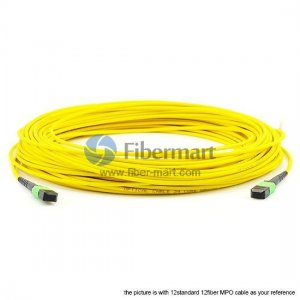
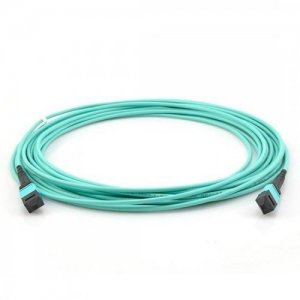
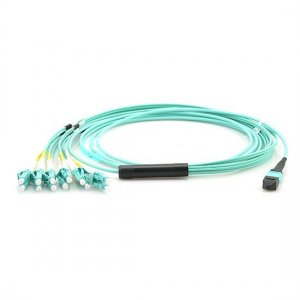
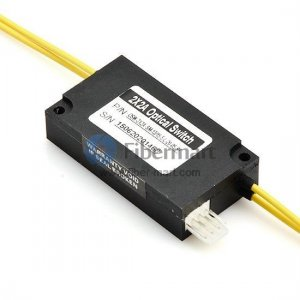


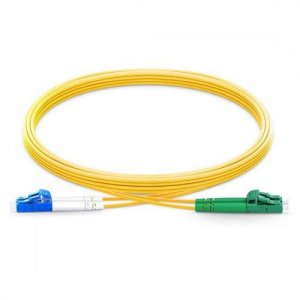




No comments have been posted yet.